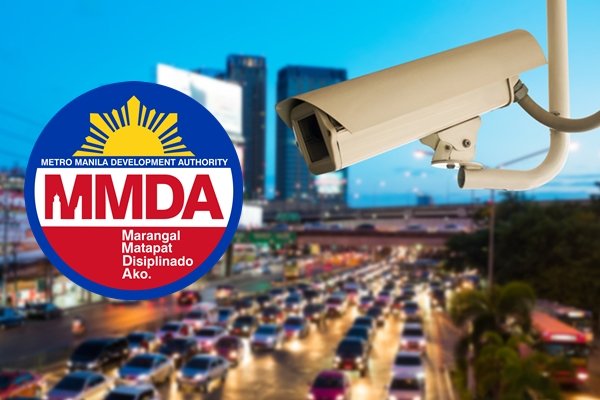In the digital age, governments around the world are adopting new ways to enhance road safety, reduce corruption, and ensure efficient traffic law enforcement. One of the most significant developments in traffic management is the No Contact Apprehension Policy (NCAP)—a system where traffic violations are detected and penalized without any physical interaction between traffic enforcers and motorists.
From the bustling streets of New York to the orderly highways of Singapore, NCAP or contactless traffic enforcement has become a crucial tool in modern urban governance.
What Is No Contact Apprehension Policy (NCAP)?
NCAP refers to the contactless enforcement of traffic laws, where cameras, sensors, and automated systems identify violations such as:
- Overspeeding
- Beating the red light
- Illegal parking
- Driving without helmets or seatbelts
- Blocking pedestrian lanes or intersections
Violators are then notified through mail, email, or digital platforms, often accompanied by photographic or video evidence. Penalties may include fines, demerit points, or license suspensions.
Loading...
How NCAP Works
The core components of NCAP systems include:
- CCTV and ANPR Cameras: Automatic Number Plate Recognition cameras detect vehicles and match plate numbers with registration databases.
- Radar and Laser Speed Guns: Installed on roads or traffic lights to monitor speed.
- AI and Software Systems: Automatically process violations and generate digital tickets.
- Back-End Databases: Maintain driver records and ensure traceability of violations.
These systems eliminate the need for face-to-face encounters, reducing the potential for bribery or human error.
Countries Using NCAP or Similar Systems
Here are the countries that implements contactless and automated traffic enforcement:
United States
The U.S. has long used automated traffic enforcement, including:
- Speed and red-light cameras (in cities like New York, Chicago, and Los Angeles)
- License plate readers for tolling and parking enforcement
Violations are typically mailed with visual evidence and payable online or by mail.
United Kingdom
The UK employs ANPR cameras and speed enforcement systems like SPECS (average speed checks) and Gatso fixed cameras. Fines are issued via post and can impact driving licenses through a points system.
Australia
Each state, particularly New South Wales and Victoria, utilizes extensive networks of:
- Fixed and mobile speed cameras
- Red-light cameras
- Section control (average speed enforcement)
The goal is both safety and revenue generation for road maintenance.
Singapore
Known for its highly disciplined traffic system, Singapore uses:
- Electronic Road Pricing (ERP) gantries
- Fixed traffic cameras at intersections
- ANPR systems integrated with vehicle registration databases
Violations are sent via mail and may result in demerit points or license suspension.
Germany
Germany uses radar and laser-based speed enforcement, especially on highways and autobahns. Some areas also apply section control (measuring speed over distance) with zero tolerance for violations.
South Korea
With one of the world’s most advanced smart city infrastructures, South Korea uses:
- AI-based smart cameras
- Speed and red-light cameras
Integrated public data systems that notify car owners electronically.
Japan
Japan applies strict traffic monitoring with CCTV cameras, toll gate systems, and manual camera surveillance in high-risk zones. Fines are processed quickly through an efficient administrative system.
UAE (Dubai, Abu Dhabi)
The UAE enforces NCAP-like systems through the Saher system and smart radars. Violators receive text alerts or app notifications, with the option to pay or contest online.
India
While not nationwide, major Indian cities like Delhi, Mumbai, and Bengaluru have adopted:
- Automated traffic violation detection systems
- Helmet and seatbelt violation cameras
Fines are sent via SMS and paid online through government portals.
Taiwan
Taiwan uses section speed control, toll camera enforcement, and ANPR systems on highways and city roads. The integration with the national vehicle database allows efficient enforcement.
NCAP in the Philippines
In the Philippines, the NCAP was introduced in several Metro Manila cities, including Manila, Quezon City, Valenzuela, Paranaque, and Muntinlupa. The goal was to:
- Address traffic congestion
- Reduce corruption from on-the-spot bribery
- Encourage discipline among drivers
However, implementation faced legal and public challenges. In 2022, the Supreme Court issued a temporary restraining order (TRO), halting NCAP in its existing form due to concerns over:
- Lack of due process for motorists
- Non-uniform implementation across cities
- Questions about legal authority and privacy
The Metropolitan Manila Development Authority (MMDA) officially reinstated the No Contact Apprehension Policy (NCAP) on May 26, 2025, following a partial lifting of the Supreme Court's temporary restraining order. This reimplementation marks a significant shift in traffic enforcement across Metro Manila, aiming to enhance road safety and reduce corruption through technology-driven measures.
Benefits of NCAP
✅ Eliminates bribery and corruption
- By removing direct interaction, the temptation to bribe is minimized.
✅ Improves enforcement efficiency
- Cameras work 24/7 and capture multiple violations at once.
✅ Promotes road safety
- When drivers know they’re being watched, they tend to obey traffic laws more strictly.
✅ Saves manpower
- Less need for on-the-ground enforcers allows agencies to allocate personnel to other areas.
Challenges and Criticism
⚠️ Privacy concerns
- Citizens worry about being constantly monitored by the state.
⚠️ System glitches
- Errors in license plate recognition or vehicle registration databases can lead to wrongful fines.
⚠️ Due process
- In some countries, violators complain of limited options to contest tickets or unclear notification systems.
⚠️ Unequal enforcement
- Motorists with more resources can contest tickets more effectively, while low-income drivers suffer.
The Future of Contactless Traffic Enforcement
As smart cities become the norm, contactless traffic enforcement will likely expand globally. With AI integration, facial recognition, and real-time analytics, NCAP systems may evolve to:
- Detect distracted driving (e.g., phone use)
- Measure driver behavior (e.g., erratic lane-switching)
- Integrate with insurance or ride-sharing platforms for dynamic pricing and penalties
However, countries must balance efficiency with fairness, ensuring systems are transparent, accountable, and respectful of privacy rights.
Conclusion
The No Contact Apprehension Policy represents a bold shift in how cities enforce road rules—leveraging technology to promote order, transparency, and safety. While implementation varies across countries, the trend is clear: the future of traffic enforcement is contactless.
As nations continue to innovate, the key to success lies in building systems that are not only smart, but also fair and inclusive for all road users.















No comments
Let us know your thoughts!